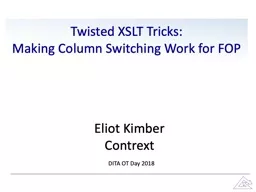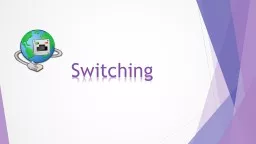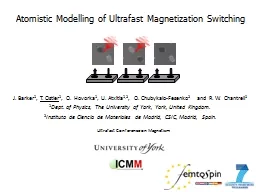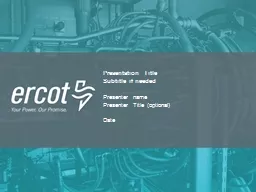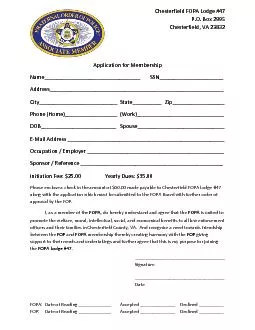PPT-Twisted XSLT Tricks: Making Column Switching Work for FOP
Author : altigan | Published Date : 2020-08-06
Eliot Kimber Contrext DITA OT Day 2018 About the Author Independent consultant focusing on DITA analysis design and implementation Doing SGML and XML for cough
Presentation Embed Code
Download Presentation
Download Presentation The PPT/PDF document "Twisted XSLT Tricks: Making Column Swit..." is the property of its rightful owner. Permission is granted to download and print the materials on this website for personal, non-commercial use only, and to display it on your personal computer provided you do not modify the materials and that you retain all copyright notices contained in the materials. By downloading content from our website, you accept the terms of this agreement.
Twisted XSLT Tricks: Making Column Switching Work for FOP: Transcript
Download Rules Of Document
"Twisted XSLT Tricks: Making Column Switching Work for FOP"The content belongs to its owner. You may download and print it for personal use, without modification, and keep all copyright notices. By downloading, you agree to these terms.
Related Documents

